As a fundamental building block of music theory, minor 6th intervals can play a significant role in shaping melodies, harmonies, and musical progressions. Whether you’re a budding musician, a music student, or simply curious about the inner workings of music, understanding major 6th intervals is essential for expanding your musical vocabulary.
In this article, we’ll explore the characteristics of the Minor 6th interval, give you examples to listen to and help you recognise it by ear.

Minor 6th Interval Songs
‘Yeah’ – usher
The song has the catchiest of hooks using just four notes. As you can see from the below image, the G natural to E flat gives us a minor 6th. This is because E natural is in the G major scale, so if we Lower this we get a MINOR 6th.
The minor 6th add a sense of edginess and excitement about the song, with this motif being repeated throughout.

‘We are Young’ – Fun
This alternative rock/indie song gives us a Minor 6th with the ‘fire’. The D natural to B flat is a minor 6th as D to B would be a major 6th. By lowering the B to B flat we create the minor 6th. In the song, this is used to add a sense. of melancholy and longing.

Baker Street
This jazz standard uses a minor 6th from F# to D natural. In F# major we would have a D#, so lowering it to a D natural gives us a Minor 6th.

What is a Minor 6th Interval?
Firstly, the definition of an interval is the distance between two notes. We could play the notes at the same time, a harmonic interval, or one of the other, a melodic interval. So how can we describe the distance between two notes.

Using whole steps and half-steps (tones and semitones)
We could describe an interval in terms of the number of half-steps for the lower note to the upper note. For a minor 6th we have to go up 8 half-steps or 4 whole-steps to create the interval.
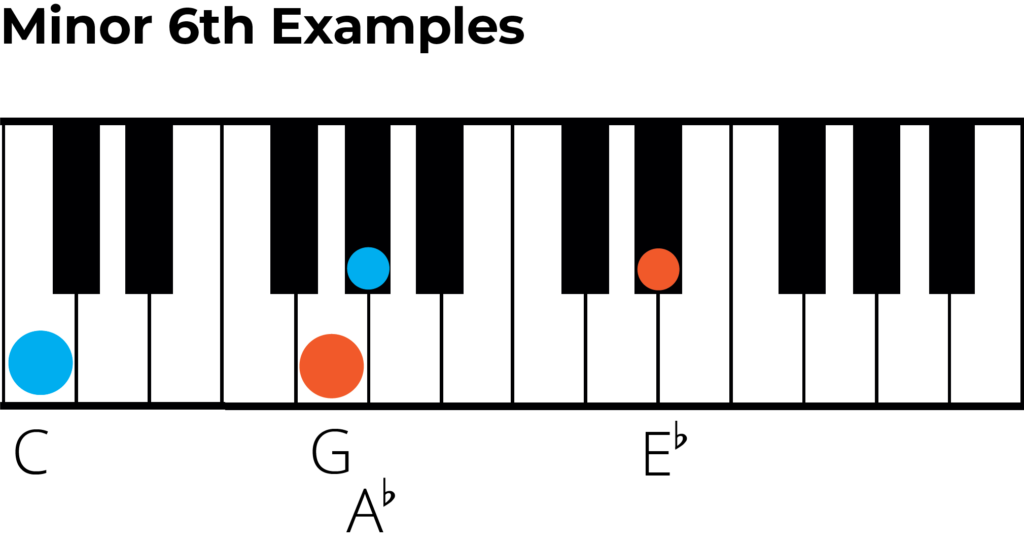
Using scales to name intervals
Simply put, scales are patterns of half-steps and whole-steps. In the major scale, the 6th degree will be a Major 6th. If we flatten this note by a half-step we will turn it into a Minor 6th.
If we use the Natural minor scale, such as A Minor, we can see that the 3rd, 6th and 7th have been flattened when comparing it to the A Major scale. So if you take the A Natural minor scale, the root to the 6th note will give you a Minor 6th interval.

Ear Training and Intervals
To develop as a musician you’ll want to be able to recognise intervals by ear. This is where ear training comes in, as the more you practice, the better your’ll get.
My recommendation for this is Tonegym as they have a comprehensive and fun program for training your ears. It’s what has gotten the best results with for my own students.
In the ‘tools’ section of their site, Tonegym even have an interval memorizer that allows you to learn every type of interval.
For an in-depth look at ear training, here’s my full review of Tonegym.
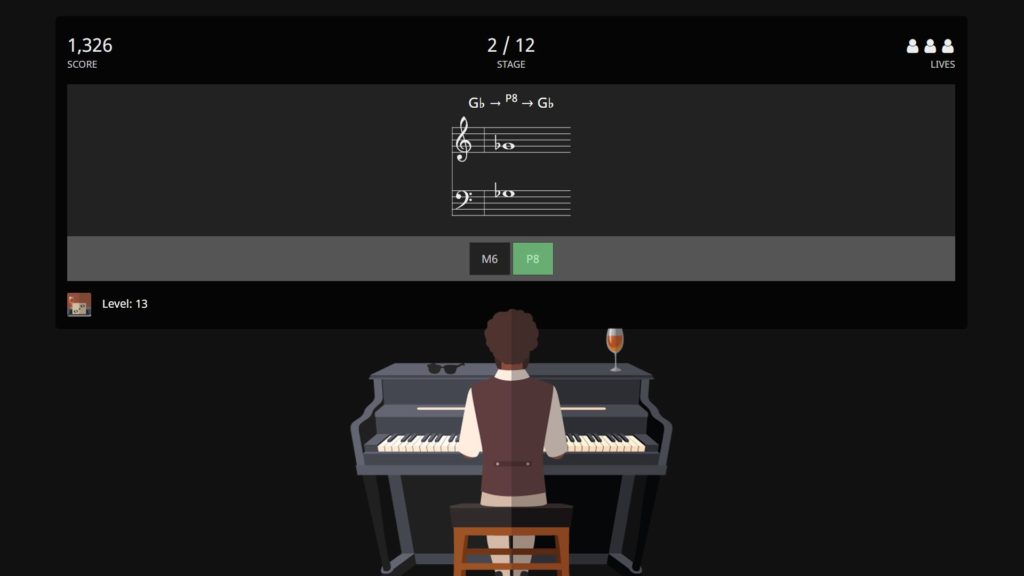
Examples of Minor 6th Intervals
Here is a table which shows Minor 6ths across a whole octave. Remember that to name an interval ask yourself, ‘Which degree of the lower note’s scale is the higher note?’
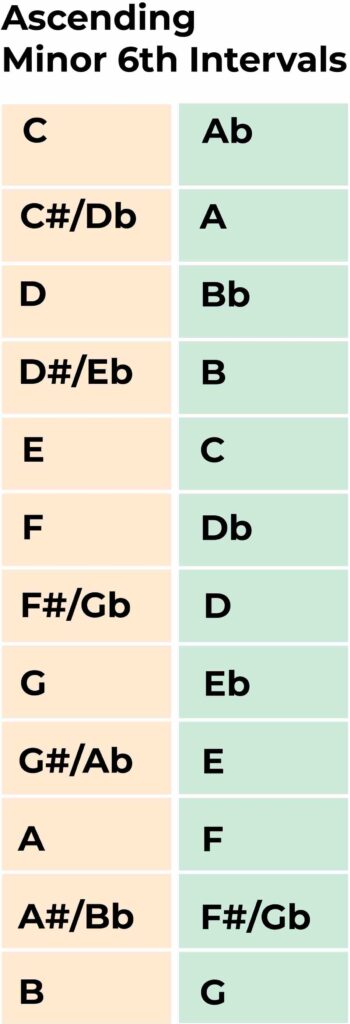
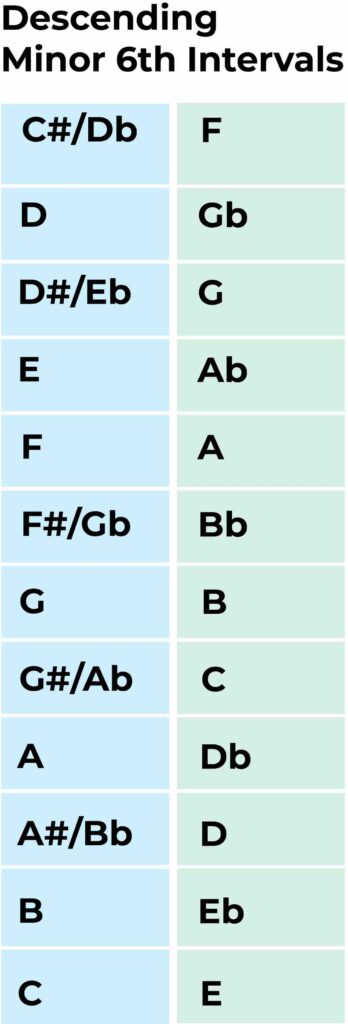
Minor 6th Interval Qualities
We can describe the sound of intervals using a numbers of adjectives. An interval can sound ‘stable’ or ‘grounded’ like a perfect 5th, or it could sound ‘dissident’, ‘neutral’ or even ‘sinister’.
The interval of a minor 6th carries a distinct sense of tension and instability. It can be described as an interval with a hint of dissonance, as the two notes are relatively close in distance on the staff.
In terms of emotions, the minor 6th interval often evokes a sense of melancholy, yearning, or unease. Its dissonant quality creates a certain level of tension and it tends to convey a sense of unresolved emotions or a hint of sadness.
When used in melodies, the minor 6th interval can add a touch of drama or emotional depth. Its unstable nature creates a melodic leap that captures attention and adds a sense of complexity to the composition.
How to Identify Minor 6th Intervals by Ear
The best way to start identifying Minor 6th intervals is by listening to reference songs like the ones above. This will give you a reference point to look back at when listening to new pieces.
For a challenge, see if you can spot the Minor 6th intervals in the following pieces.
- ‘Johanna’ from Sweeney Todd
- ‘Black Orpheus’ Jaxx Standard
- The Entertainer
- ‘Without me’ Eminem
ToneGym- The Ultimate Ear Training App
ToneGym allows you to improve your ear with a range of games, interactive and competitions.
Or check out our complete review of ToneGym.

How to Play Minor 6th Intervals on Your Instrument
If you are a pianist then playing a Minor 6th couldn’t be easier. Moving up four whole-steps (8 half-steps) or playing the 6th note of the natural minor scale. Check out the examples below.

Minor 6th intervals on guitar are also simply to play. The shape below can be slide up a down the neck to play minor 6th intervals starting and ending in any note.
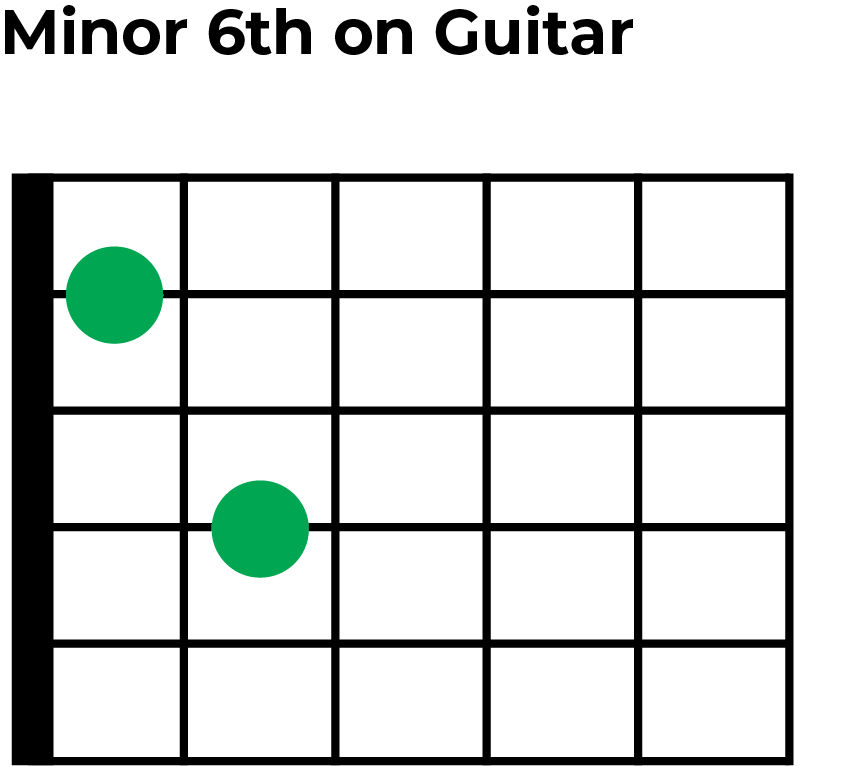
What’s next….?
- Learn about the Major 6th intervals.
- Expand your interval knowledge with out complete guide to intervals.
